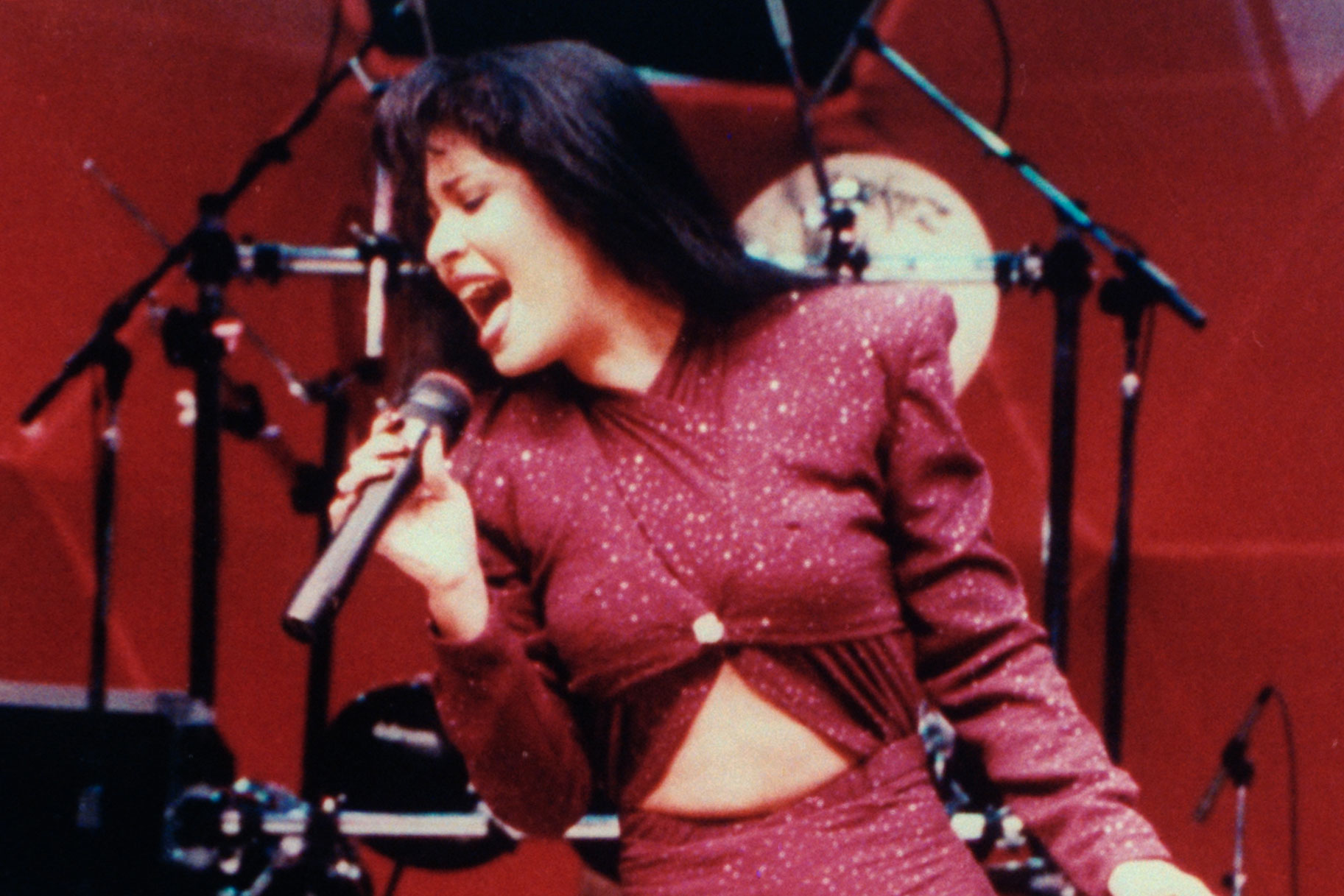Create a free profile to get unlimited access to exclusive videos, breaking news, sweepstakes, and more!
How Laura Canales Blazed A Trail For Selena Quintanilla-Pérez's Breakthrough Career
In the new Netflix series based on the life of late Mexican-American icon Selena, the teenage singer has a meaningful encounter with the woman first dubbed “queen of Tejano music."

If you’re watching Netflix’s new hit show “Selena: The Series,” then you’re probably learning a good amount about Tejano music, the hybrid genre that catapulted Selena Quintanilla-Pérez to international stardom. But as the series indicates, Selena was not the first “queen of Tejano music” — that trailblazer was a woman named Laura Canales.
(Mild spoilers for “Selena: The Series” below)
In episode three of the series’ first season, 15-year-old Selena crosses paths with Canales and the two share a special moment as they attend the 1986 Tejano Music Awards. Selena, then an up-and-coming artist, was for the first time nominated for Female Vocalist of the Year at the awards — but so was Canales, who by the mid-80s had taken the award home several times. When the two characters speak after running into each other in the ladies’ room, Canales gives the young singer some strong advice about being true to herself as her career takes off.
“Everyone in this business is going to tell you who you need to be every step of the way. From what I’ve seen of you, you should always do everything possible to be who you are,” Canales tells the star-struck teenager.
Raised in Texas, Canales was a always strong vocalist throughout her youth. And just like Selena, Canales’ father played a pivotal role in the early days of her career when he encouraged her to perform Tejano music, the hybrid style created along the Texas-Mexico border that was primarily sung by men at the time. Canales first appeared on the scene in 1973, performing with the groups Los Unicos and Conjunto Bernal. Then in the 1970s, she helped form the band Snowball & Company, which went on to release several albums and had a hit with the song “Midnight Blue.”
But it was in the next decade that Canales truly found fame. In 1981, she and her new husband formed Laura Canales & Encanto. The band released several records throughout the decade and had a major hit with the track “Sí Viví Contigo.” Soon she was dubbed “La Reina de la Onda Tejana” (“The Queen of the Tejano Wave”) and took home the Female Vocalist of the Year at the Tejano Music Awards from 1983 to 1985. Selena broke that streak when she won the award in 1986.
It’s unclear if anything similar to the inspirational conversation between the two singers as depicted in “Selena: The Series” actually took place at the 1986 awards. However, we do know that the two stars did maintain a friendly relationship as their careers coincided — even as they were competing for the same awards and Selena was bringing the Tejano sound to fresh audiences and massive stadiums.
Selena and Canales did also perform together at multiple events throughout their careers, and Canales was able to ride the wave of international interest in Tejano music in the 1990s during her first comeback, performing hits like “Cuatro Caminos” and “Dame La Mano.”
After Selena’s tragic murder in 1995, Canales paid her respects to the young singer by attending her burial at Seaside Memorial Park in Corpus Christi, Texas, according to the Corpus Christi Caller-Times.
In the 1990s, Canales decided to start her second act and enrolled at Texas A&M University-Kingsville, and in 1997 she graduated with a BA in Psychology and Speech Therapy. But that wasn’t the end of her music career — she mounted a second comeback when she appeared on the Leyendas y Raices tour, which featured fellow Tejano performers.
In 2000, Canales had the honor of being a member of the first class of inductees into the Tejano Roots Hall of Fame.
Sadly, her life was cut short when she developed a case of pneumonia and died suddenly on April 16, 2005, after complications from gallbladder surgery, NPR reported. She was 50 years old.
























